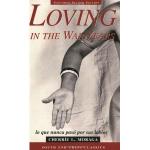
|
| Name: _________________________ | Period: ___________________ |
This test consists of 15 multiple choice questions and 5 short answer questions.
Multiple Choice Questions
1. Moraga speaks both English and ____________.
(a) Spanish.
(b) German.
(c) French.
(d) Italian.
2. According to Moraga, ______________ means more than one's own well-being or peace.
(a) The future.
(b) The truth.
(c) Poetry.
(d) Education.
3. Who is the narrator's lover in "You Upset the Whole System of This Place?"
(a) Emilie.
(b) Julie.
(c) Anna.
(d) Carrie.
4. Many activists identify the oppressor as which of the following?
(a) All of these.
(b) White men.
(c) Capitalists.
(d) Government.
5. In "You Call It, 'Amputation'" to what does Moraga compare a phantom limb?
(a) The loss of a lover.
(b) The death of a parent.
(c) The inability to repress one's sexuality.
(d) A mistake made long ago.
6. In what way does Moraga say she can be racist?
(a) In the books she reads.
(b) In her language.
(c) In her choice of friends.
(d) In her clothes.
7. What had Moraga and her mother suspected about her father?
(a) He was unfaithful.
(b) He was a homosexual.
(c) He was a closet alcoholic.
(d) He smoked pot.
8. In what faith was Moraga raised?
(a) Methodist.
(b) Catholic.
(c) Jewish.
(d) Baptist.
9. To whom does Moraga compare her friend's friend, Yves, in "For Amber?"
(a) Her coach.
(b) Her grandmother.
(c) Her driving instructor.
(d) Her mentor.
10. To what does Moraga compare her relationship with a male soldier in "The War Bride?"
(a) Going to the dentist.
(b) Falling down steps.
(c) Failing a class.
(d) Her relationship with her new female lover.
11. What does Cecilia notice about Joyce when she sees her again after having separated?
(a) She has red hair.
(b) She is pregnant.
(c) She is limping.
(d) She is blind.
12. Moraga's various identities have particularly affected her life with _____________.
(a) her family.
(b) her editors.
(c) her employers.
(d) her friends.
13. What is wrong with the narrator in "You Upset the Whole System of This Place?"
(a) She has tuberculosis.
(b) She has a sinus infection.
(c) She is sick with a cough.
(d) She has cramps.
14. What is the war that Moraga talks about in "Hearts?"
(a) The Civil Rights war.
(b) The War on Poverty.
(c) The Vietnam War.
(d) The battle waged by oppressed groups.
15. What does Cecilia do when in her dream she sees Deborah on the other side of the window with the burglar?
(a) She calls 911.
(b) She does not let her in.
(c) She smashes the window.
(d) She closes the blinds.
Short Answer Questions
1. What makes Cecilia and Deborah leave their apartment?
2. What was Moraga's feeling when she left her church?
3. To which of the following oppressed groups does Moraga refer in "Hearts?"
4. Moraga's nationality is half-white and half ______________.
5. With whom does Moraga identify in "No Born-Again Children?"
|
This section contains 440 words (approx. 2 pages at 300 words per page) |

|




